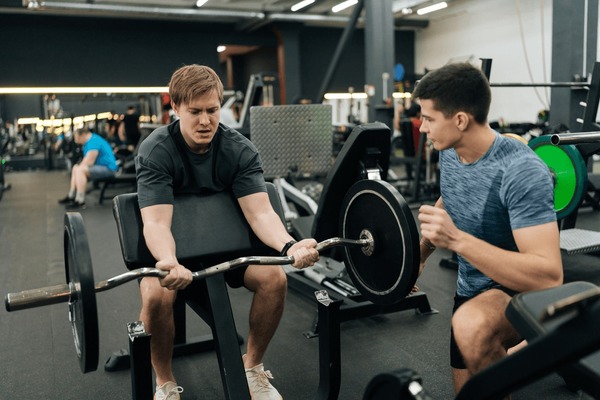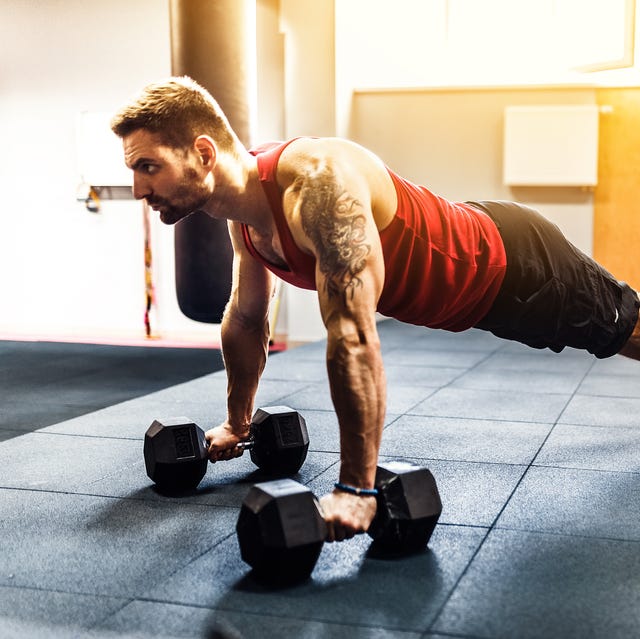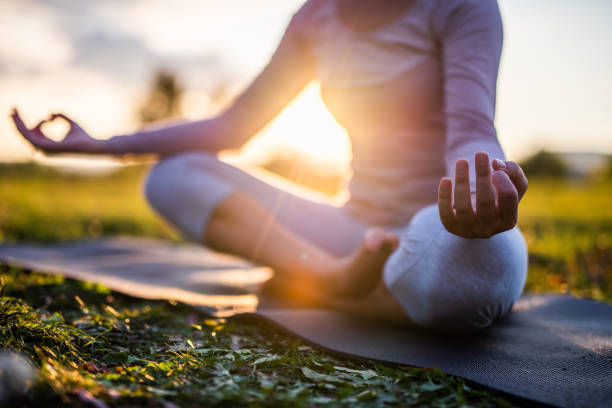The Comprehensive Beginner's Guide: How to Start Running and Make It a Part of Your Life
Engaging Introduction: Why Running? A Thousand-Mile Journey Begins with a Single Step
Have you ever watched runners glide past you effortlessly and wished you could join them? Running is not just a sport; it is a journey of physical and mental transformation. It is one of the simplest and most effective forms of exercise, requiring nothing more than a good pair of shoes and the open road.
In our fast-paced world, running has become a sanctuary for many. It offers a unique opportunity to relieve stress, improve cardiovascular health, and boost mood. However, for beginners, the idea of running long distances, or even a few continuous minutes, can seem like a daunting task.
This comprehensive guide is your detailed map. We will take you by the hand, step-by-step, from choosing the right shoe to completing your first 5K race, focusing on practical tips and safe methods to avoid injuries. Our goal is to help you start correctly, enjoy the process, and turn running from a challenge into a sustainable, healthy habit.
---
Part One: The Essentials Before You Start
Before you lace up your shoes and hit the road, there are a few foundational steps you should take to ensure a safe and effective start.
1. Consult Your Doctor: Safety First
If you suffer from any chronic health condition, are over 40, or have not exercised regularly for a long time, it is essential to consult your doctor. This will help ensure that running is safe for you and that you receive any specific guidance related to your health status.
2. Choosing the Right Gear: An Investment in Your Comfort
The most important piece of equipment you will need is the right running shoe. Do not skimp on this aspect, as your shoe is your first line of defense against injuries.
#### How to Choose a Running Shoe?
Sizing and Testing: Visit a specialized running store. Experts there can analyze your gait (Gait Analysis) to determine the type of support you need (such as motion control or neutral cushioning). Immediate Comfort: The shoe should feel comfortable as soon as you put it on. Do not rely on "breaking in" the shoe over time. Size: Ensure there is a small gap (the width of your thumb) between your longest toe and the end of the shoe, as feet swell slightly during running.
| Shoe Type | Who is it suitable for? | Key Features |
|---|---|---|
| :--- | :--- | :--- |
| <strong>Neutral</strong> | Runners with a normal or high arch, who do not overpronate (Supination). | Excellent cushioning, high flexibility. |
| <strong>Motion Control</strong> | Runners with flat feet or those who overpronate excessively. | Extra arch support, greater rigidity. |
| <strong>Stability</strong> | A mix of the two types, offering light to moderate support. | Balance between cushioning and support. |
In addition to shoes, invest in athletic clothing made from moisture-wicking fabrics (like polyester or nylon) to avoid chafing and irritation.
3. Setting Realistic Goals: The 10% Rule
Running requires patience. Do not try to run 5 kilometers on your first day. Start with a small, measurable goal, such as running continuously for 30 minutes within a month.
The 10% Rule: To avoid injuries, do not increase your total weekly running distance or duration by more than 10% over the previous week. This golden rule helps your body adapt gradually.
---
Part Two: The Training Plan: From Walking to Running
The best way to start running is by using the "Run-Walk Method." This strategy reduces stress on muscles and joints and allows you to build your fitness gradually.
1. The "Couch to 5K" Program (C25K)
The C25K program is one of the most popular and successful training plans for beginners. The program typically takes 9 weeks and includes 3 training sessions per week.
| Week | Day 1 | Day 2 | Day 3 |
|---|---|---|---|
| :--- | :--- | :--- | :--- |
| <strong>One</strong> | 5 min brisk walk, then alternate (60 sec run / 90 sec walk) × 8 times. | Same workout. | Same workout. |
| <strong>Two</strong> | 5 min brisk walk, then alternate (90 sec run / 2 min walk) × 6 times. | Same workout. | Same workout. |
| <strong>Three</strong> | 5 min brisk walk, then alternate (90 sec run / 90 sec walk) × 4 times, then (3 min run / 3 min walk) × 2. | Same workout. | Same workout. |
| <strong>...</strong> | <strong>(Gradual increase continues until you reach 30 minutes of continuous running in Week Nine)</strong> |
Practical Tip: Do not be ashamed to repeat any week if you feel you are not ready to move to the next level. Slow and steady progress is the key to success.
2. Warm-up and Cool-down: Never Skip Them
Warm-up: Before each running session, do 5 minutes of brisk walking or light dynamic movements (like arm circles, knee raises). This prepares your muscles for exertion and reduces the risk of injury.
Cool-down: After finishing your run, do 5 minutes of slow walking, followed by static stretching. Focus on stretching your hamstrings, quadriceps, and calf muscles.
---
Part Three: Proper Running Technique (Form)
Running with the correct technique not only makes you faster but also significantly reduces the likelihood of injury. There is no single "perfect form" for running, but there are fundamental principles to follow.
1. Body Posture
Look Ahead: Keep your gaze directed forward (about 10-20 meters), not at your feet. Shoulders: Keep them relaxed and low, avoiding shrugging them toward your ears. Torso: Keep your torso straight and slightly engaged (Core Engagement), avoiding leaning forward or backward.
2. Arm Movement
Angle: Bend your elbows at approximately a 90-degree angle. Movement: Your arms should swing naturally and comfortably forward and backward, not across your body. Hands: Keep your hands relaxed, as if you are holding a potato chip between your thumb and index finger and do not want to crush it.
3. Foot Strike
Short Stride: Avoid overstriding. Try to keep your steps short and quick. Cadence: Aim for a step rate of about 170-180 steps per minute. This rate reduces impact force and encourages landing under your center of gravity. Landing Spot: Try to land on your midfoot or forefoot, and avoid heavy heel striking, especially if it causes you pain.
---
Part Four: Nutrition, Hydration, and Recovery
Running is half the equation; the other half is how you support your body off the road.
1. Hydration
Before Running: Drink a glass of water 30 minutes before starting your workout. During Running: If your run is less than 45 minutes, you probably do not need water. If it is longer, carry a water bottle or plan a route that passes water stations. After Running: Drink water to replenish lost fluids.
2. Nutrition
Before Running (30-60 minutes): Eat a light, easily digestible, carbohydrate-rich snack, such as a banana, or a slice of toast with peanut butter. Avoid high-fat or high-fiber foods immediately before running. After Running (within 30-60 minutes): Eat a meal containing a mix of carbohydrates and protein (in a 3:1 or 4:1 ratio) to help replenish glycogen stores and repair muscles. Example: Greek yogurt with fruit, or chocolate milk.
3. Recovery and Rest
Rest days are essential for progress. During rest days, your muscles repair themselves and strengthen their fibers. Ignoring rest days is the fastest way to injury and burnout.
Sleep: Ensure you get 7-9 hours of quality sleep every night. Listen to Your Body: If you feel sharp or unusual pain, do not hesitate to take an extra rest day.
---
Part Five: Common Challenges and Solutions
Every beginner runner faces challenges, but knowing how to deal with them will ensure your continuity.
1. Side Stitches
These are sharp, sudden pains in the abdomen or under the ribs.
Solution: Slow down your pace or switch to walking. Press on the painful area while exhaling. Make sure you do not eat a large meal immediately before running.
2. Feeling Bored or Losing Motivation
Solution: Change your running route regularly. Listen to music, audiobooks, or podcasts. Find a running partner or join a local group. Always remember your initial goal.
3. Knee or Leg Pain (Shin Splints)
These pains often occur due to a rapid increase in distance or wearing inappropriate shoes.
Solution: Make sure to follow the 10% rule. Perform strengthening exercises for your leg and foot muscles. Use ice on the affected area after running. If the pain persists, consult a physical therapist.
---
Summary Conclusion: Enjoy the Journey
Running is a personal and rewarding journey. Remember that every successful runner started where you are now: on the couch, or with short walking steps.
Summary of Key Points:
Start Slow: Use the run-walk method and follow a structured training plan like C25K. Invest in Your Shoes: They are the most important piece of your gear. Technique Matters: Maintain an upright posture and short, quick strides. Rest is Part of Training: Do not ignore recovery days.
- Listen to Your Body: Mild aches are normal, but sharp pain means stopping.
Now, all you have to do is tie your shoes and head out. Do not worry about speed or distance at first. Just focus on getting out, enjoying the fresh air, and the feeling of accomplishment. Running awaits you!



